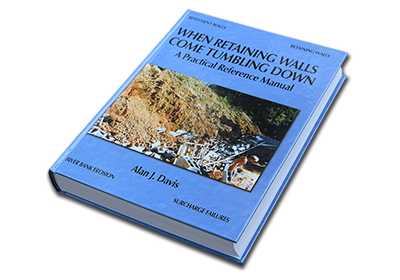7 Reasons for Revetment Failure
“When Retaining Walls Come Tumbling Down” is not just a book—it’s a comprehensive guide that equips you with strategies for Structural Assessment of systems affected by various natural and man-made events. Here’s a quick overview of how some key chapter topics could serve as a lifeline for both trade professionals and laypersons in identifying common revetment issues.
Flood Damage:
This chapter elaborates on the impact of floods on retaining walls and structural systems. Readers will learn how to identify the warning signs of flood damage and employ effective repair techniques. For homeowners, this knowledge can mean the difference between timely intervention and expensive repairs.
Waves and Boat Wakes:
The wave action from natural water bodies and boat wakes can cause unseen damage over time. This chapter provides trade professionals with advanced assessment strategies, however, every reader will benefit from the easy-to-understand descriptions of how to recognize early signs of damage.
Bank & Bed Erosion:
Here, the book delves into the causes and signs of bank and bed erosion. It provides clear steps for professional-level assessment, as well as simplified checklists for homeowners to identify potential erosion issues before they escalate.
Weep Holes and Drainage:
Proper weep hole and drainage system maintenance is essential to the longevity of structural systems. This chapter imparts crucial knowledge on assessing the functionality of these systems. The reader can learn practical tips on maintaining a property’s drainage systems.
Sand Leaching:
This chapter tackles the often overlooked problem of sand leaching. Structural Engineers or Trade Professionals will appreciate the detailed assessment strategies, with simple yet effective techniques to identify and address sand leaching.
Background Matter:
An insightful section that explains how surrounding material types and characteristics can affect a structure. You will find advanced analysis methods here, and simple explanations you can learn to understand the interaction between retaining walls and the surrounding soil or material.
Structural Settlement:
Understanding and identifying the signs of structural settlement is crucial. This chapter offers robust strategies to assess settlement issues, you can use the straightforward guidelines to spot the early signs of trouble.
Whether you’re a seasoned professional or a property owner wanting to protect your investment, “When Retaining Walls Come Tumbling Down” is an invaluable tool that can help you stay ahead of potential revetment issues. Its blend of in-depth professional advice and easy-to-understand tips for the layperson makes it a crucial reference for maintaining and improving the health of your structural systems.

